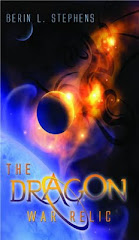This purpose of this blog is mainly for my music and writing, though it seems I keep getting distracted by politics. So, I thought I'd write about what I'm doing for my music practice lately. I've been getting more in depth into scales. For starters, I'm not a big fan of scales. If I could find a way to keep up my technique and never touch another scale again, I'd do it. Unfortunately, there is no way that I know of. I've noticed that when I don't keep up on technical/scale practice, my playing rapidly deteriorates. Anyway, for scales, I start off with full range chromatic (on sax), then do my 3-6-2-5-1 in all 12 keys. To do this, I start off with a major scale, then go up a third and play the locrian, then up a fourth and do the diminished whole tone, then up a fourth to the dorian, then up a fourth to the mixolydian/dominant and finish up a fourth back to the major. What this equates to is doing a minor 2-5-1 and using the minor 1 (dorian) as the 2 of a major 2-5-1. So an example in the key of C would be: C major, E locrian, A diminished whole tone, D dorian, G mixolydian, C major.
The next scales I do, not necessarily in this order, are the two whole tone scales, the '12' diminished scales ( I know, there are only three, but I like to practice all of them starting on each of the chromatic notes, that way, when I see the C dim7, I know which scale to use), the lydian dominant (mode of jazz melodic minor), and the locrian sharp 2 (another mode of jazz melodic minor). If I still feel like it, I might run through blues and jazz melodic minor to make it a total of 123 different scales.
Once that fun is over, I've also been doing arpeggios to bring out the 'color' notes of a scale. For instance, if I see a C Maj7 symbol, I do a B min 7 arpeggio to it. Why, you may ask? The B min7 gives me a B (the maj 7th), D (the 9th), F# (raised 4) and A (the sixth). If it is a C min7, I play Bb Major arpeggio: Bb is the min 7th, D the 9th, F the 4th, A the 6th. If it is a C7, then I do a Bb Maj7+5: Bb is the min 7th, D the 9th, F# the +4, and A the 6th. When I think about these arpeggios, along with the scales, while improvising, I am more likely to choose these more 'colorful' notes. I run through all twelve keys in Band-In-A-Box, or lately I'll use Aebersold Major and Minor and just focus on one major and one minor key. It doesn't give me mixolidians, though.
Okay, next I finally get to music. I make sure to do some reading practice, which lately has been the Gordon Goodwin tenor sax book and the Bb Omnibook. I find the Bb Omnibook to be more of a challenge than the Eb, especially since I've been doing it up an octave on tenor to avoid all those notes below the range and to work on my altissimo chops.
I'm also trying to get some classical alto chops back, so if I don't do the jazz reading, I'll work a little through the Ferling and lately I've been working a little on the Bernard Heiden Sonata. In addition, if I'm doing a classical day, I'll spend several minutes working on vibrato, since playing jazz does not keep my classical vibrato style in shape.
Lastly, if I'm doing a jazz day, I improvise through several standards, usually with Band-In-A-Box. I also sometimes do some sight reading practice by having BIAB create a random solo and then I read along.
There are other things that I do at different times, but these are the main things I've been doing lately. I need to get more clarinet and flute practice working in, too.

No comments:
Post a Comment